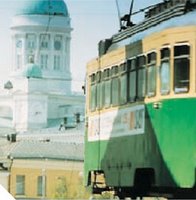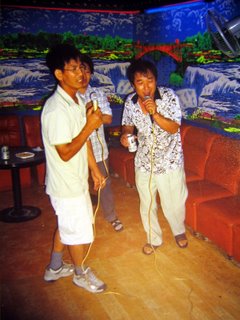
A piece of Finnish subtitles for Coast Guard from the scene in which corporal Kang, dismissed from service, has returned to drill his former subordinates. |
I once lamented that I had promised to translate alltogether seven Kim Ki-duk movies that a digital channel operated by the National Broadcasting Company (YLE) was airing this spring. Well, I excused myself from three of those on the very real pretext of having to try to finish my dissertation, but I did not have the nerve to discard the job wholly once I had agreed to do it. Translating Kim Ki-duk films is no pleasant experience, unless one enjoys finding ways to express all the profanities. At the end of April I finished Kim's Haeansôn (Coast Guard, Rannikkovartija), a story of a conscript serving on a coast guard battallion, who goes crazy after mistaking a civilian for an intruding spy.
There were some issues to solve when translating the film to Finnish.
• Military terms of address and reference.
Koreans - at least in the film - refer often to the post (platoon leader, soch'ojang(nim) of the person when addressing a superior and not to the rank, which always is the case in Finland. A movie translation needs to flow smoothly, and the viewer doesn't have time to wander what's meant with the line visible in the screen from 1 to 3 seconds, so in that case I made the decision to use mainly the Finnish practice as long as there was room and time. The problem was that rank was not apparent in the script that I had, and the digital copy I had didn't show the insignia well enough. So I just gave some of the characters a rank which was suitable for the film and made sense for the viewer: sergeant (kersantti), kapteeni (captain) and colonel (eversti).
• Military rank.
In addition to having to give rank for the sake of clarity to characters whose rank wasn't clear from the film, the Korean and Finnish military ranks don't always match, so some simplification was inevitable. It'd have been difficult to distinguish between ibyông(2-byông) and ilbyông (1-byông), so I largely avoided mentioning rank in their case and used mainly just the family name. The rank most often appearing in the film was sangbyông, "corporal" in English, or korpraali by us.
• Speech levels.
Speech levels always are a question to solve. Usually the distinction between panmal and chondaemal, when it needs to be made, can be done with the singular and plural forms of address, but there are contexts when it needs to be disregarded, like in the case of a dating couple, of whom one uses panmal and the other chondaemal.
In the Finnish army, at least in the late 1980s, both superiors and inferiors use the "formal" plural form of address which is becoming rarer and rarer in the civilian world. In the translation of "Coast Guard" I followed the Korean use of speech levels: singular person form for panmal that the superiors used towards inferiors or men of similar rank amongst themselves, and plural forms for chondaemal.
• Others.
Couldn't help playing a little prank in finding a substitute for the ROK national flower mugunghwa (Blue Hibiscus flower), which appears as a password in one scene. Using the Finnish word for that flower (hibiscus syrianus), "sinihibiskus", would have made little sense since few viewers would have recognized it as a name of a flower. So instead I put it as voikukka, (dandelion) which needs no further explanation,
• Sshibal saekki
When a line is said repeatedly in one scene, there's no need to have it subtitled every time, but on the other hand it's good to have some text when something is being said, and the translators are paid by the amount of text. In "Coast Guard", shibal saekki or the emphasized sshibal saekki was one of those often-repeated lines. Having the translation in the screen repeatedly ends up not looking nice, so I used my imagination a bit. Once I inserted my own kind of joke by glossing a sentence something like yai sshibal saekki illo wa ("come here bastard") in a fight scene with a very Finnish nyt tulee turpaan ("now I'm gonna beat the crap out of you" or something), an epitome of invited or uninvited Finnish physical aggression.
The prospects that the broadcasting corporation is done with Kim Ki-duk for a while now are good.
Categories at del.icio.us/hunjang: literature/movies ∙ Koreanlanguage ∙ Korea-Finland |






 Visited
Visited 



